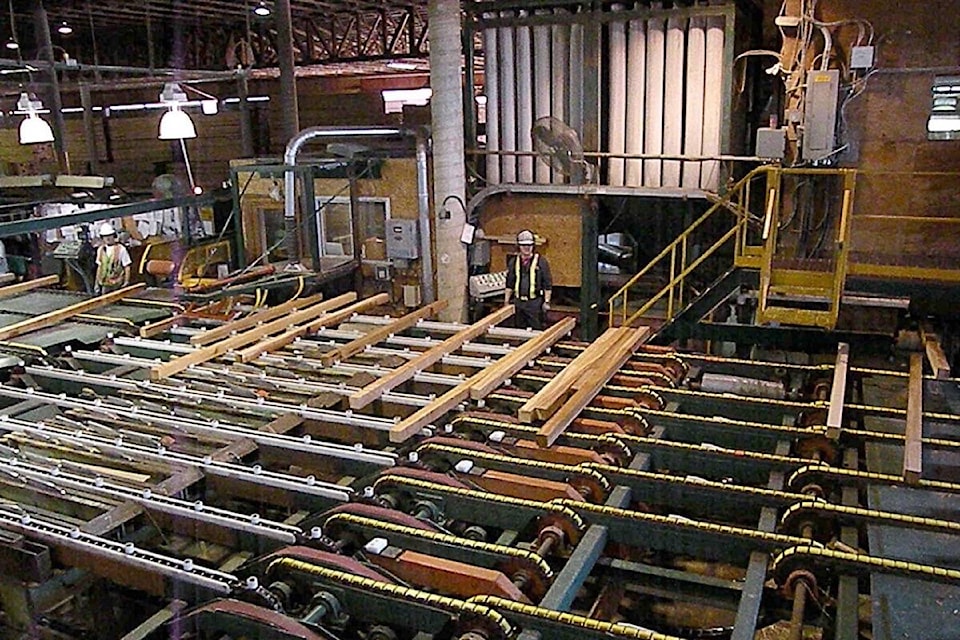Second of a series on B.C. labour law changes before the B.C. legislature.
Changes to B.C.91┬Ń┴─╩ėŲĄÖs Labour Relations Code have been added to the NDP government91┬Ń┴─╩ėŲĄÖs strategy to increase union membership in the province.
After moving to designated union-only construction for public projects like the Pattullo Bridge and the Trans-Canada Highway widening east of Kamloops, changes introduced by Labour Minister Harry Bains focused on preserving union terms when service contracts are re-tendered, and streamlining union certifications. He invited union leaders to the media briefing, where Hospital Employees91┬Ń┴─╩ėŲĄÖ Union secretary Jennifer Whiteside praised the move to end 91┬Ń┴─╩ėŲĄ£contract flipping91┬Ń┴─╩ėŲĄØ in senior care homes.
B.C. Federation of Labour president Laird Cronk was also at the presentation at the B.C. legislature. Cronk is disappointed about the NDP government91┬Ń┴─╩ėŲĄÖs decision to keep secret ballot voting in union certifications, but he is encouraged about strengthening successor rights when contract services are re-tendered.
91┬Ń┴─╩ėŲĄ£British Columbia remains a low-wage province, and precarious work is on the rise,91┬Ń┴─╩ėŲĄØ Cronk said. 91┬Ń┴─╩ėŲĄ£The best antidote to economic inequality is greater union density.91┬Ń┴─╩ėŲĄØ
The government and its traditional supporters in organized labour are hoping to turn around a long-term trend. In 1984 the 91┬Ń┴─╩ėŲĄ£union density91┬Ń┴─╩ėŲĄØ of the B.C. workforce was 45.6 per cent, well above the national average for Canada, according to Statistics Canada. By 2004 B.C. it had seen the largest decline of all Canadian jurisdictions, with the union share of the private sector down to 24 per cent by 1997 and below 17 per cent by 2016.
The B.C. Business Council submission to the province91┬Ń┴─╩ėŲĄÖs identified three fundamental labour market trends, the first being a continuing shift from stable, predictable employment to more precarious work and self-employment. Others seen in the past 30 years are an increasing income gap between skilled and non-skilled workers, and a movement towards more part-time and temporary work.
For employees being signed up by a union the legislation shortens the union certification vote period from 10 days to five, which some unions and employers support because it ends the uncertainty of an organizing drive more quickly.
PART ONE:
READ MORE:
But the amendments also remove a provision that the B.C. Liberal government added in 2003, allowing employers to communicate with employees about unionization during a certification.
91┬Ń┴─╩ėŲĄ£If passed, employer speech rights will revert to their pre-2003 status when views critical of union affairs unrelated to the employer91┬Ń┴─╩ėŲĄÖs business as well as 91┬Ń┴─╩ėŲĄśunreasonably held beliefs91┬Ń┴─╩ėŲĄÖ about such topics resulted in unfair labour practice complaints,91┬Ń┴─╩ėŲĄØ says an from Vancouver law firm Fasken.
The has increased authority to impose a certification if an unfair labour practice complaint is upheld.
Contract workers are expected to be considered in a later stage of labour law revisions, which the Business Council of B.C. expects is still to come. The government could move to extend wage and benefits provisions to include more of the fastest-growing area of employment.
The independent panel that reviewed B.C.91┬Ń┴─╩ėŲĄÖs labour code examined the shift to the so-called 91┬Ń┴─╩ėŲĄ£gig economy,91┬Ń┴─╩ėŲĄØ under a legal framework that dates to the 1970s where large-scale resource operations employing mostly male workers were the standard.
By 2016, women91┬Ń┴─╩ėŲĄÖs participation had increased to almost 50 per cent, with more visible minorities and disabled workers in a steadily aging workforce, the panel91┬Ń┴─╩ėŲĄÖs report says.
Service jobs expanded as resource extraction and manufacturing employment declined, much of it due to technology and automation of mills and factories. Service jobs now account for 80 per cent of B.C. employment, with the largest growth at the opposite ends of the wage spectrum. Professional, scientific and technical business skills command high wages, while accommodation and food services jobs have doubled to more than 180,000 people since 1986.
The B.C. Green Party supports Bill 30, which needs its votes to pass by the end of May. Green leader Andrew Weaver said extending union successor rights to janitorial, security, bus transportation, food services and non-clinical health services such as senior care homes is an important step forward, but the shift to part-time contract work 91┬Ń┴─╩ėŲĄ£continues to be missing from the conversation.
91┬Ń┴─╩ėŲĄ£From increases in precarious, gig-based jobs to the increasing use of contractors instead of employees, British Columbians are dealing with huge changes to job stability and income security, and our laws aren91┬Ń┴─╩ėŲĄÖt keeping up.91┬Ń┴─╩ėŲĄØ Weaver said.
tfletcher@blackpress.ca
Like us on and follow us on .



